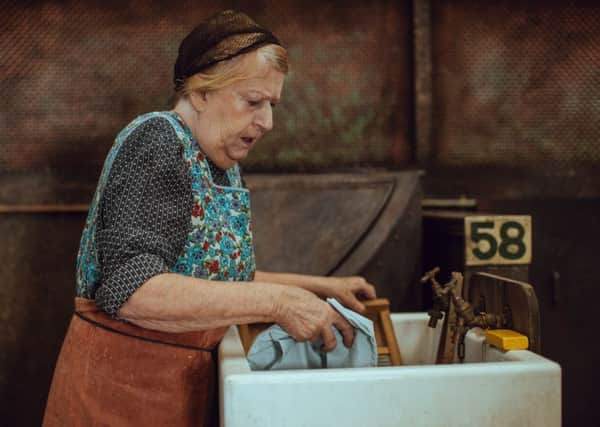Theatre review: The Steamie, SSE Hydro, Glasgow


The play is set in a communal wash-house in Glasgow on a New Year’s eve in the early 1950s, when the intense shared tenement life of working class Glasgow was about to be overtaken by slum clearance, and a mass exodus to new housing schemes; and we should perhaps have guessed – as that first Wildcat production took to the road, with a cast led by Dorothy Paul and Elaine C Smith – that a play that so effortlessly bridged the gap between the 1950s and the late 80s would have no difficulty in enduring for another three decades, and more.
What we could hardly have imagined, though, was how the technology of stadium live performance would soar away, in the 21st century, to create the possibility of live theatre on such a massive scale; and after three hugely successful Still Game shows at The Hydro, it’s perhaps not surprising that Tony Roper’s hugely popular drama, with superb songs by Dave Anderson, was next in line for the full Hydro treatment.
Advertisement
Hide AdIn a two-and-half-hour sequence of chat and humour that is apparently simple and shapeless, but fundamentally brilliant and perfectly-structured, Roper creates four leading characters who range from the old and lonely Mrs Culfeathers, through busy mothers Dolly and Margaret, to young Doreen, the newly-wed with big dreams of a council house, and a posh new life “in an avenue” in Drumchapel.
The historic poignancies and ironies are intense; yet the risks in trying to scale up such an intimate drama are all successfully avoided in Tony Roper’s own staging at The Hydro, which adds a series of evocative pre-show images of 1950s Glasgow on the big screens around the auditorium, plus a steamie set that – for some big musical numbers – can transform instantly into a contemporary street-scene complete with tram, and make space for a 13-strong chorus of singer-dancers, who help to evoke the bustling street life of the city in those days.
The essential focus, though, remains on the four women at the centre of the story, along with Andy, the male steamie supervisor, played here with terrific comic flair by Harry Ward. Roper’s cast of Mary McCusker, Fiona Wood, Gayle Telfer Stevens and Louise McCarthy rise brilliantly to the demands of the huge arena, delivering performances that work superbly on screen around the stadium, as well as dominating the stage with near-operatic force.
And all the great steamie songs – from Andy’s hilarious version of The Big Picture, through Doreen’s Dreams Come True, to Magrit’s great mother’s anthem Labour Of Love – are not only in place, but magnificently delivered, thanks to musical supervisor and arranger Gordon Dougall, and musical director Ross Brown and his band.
Also in place – and greeted with gleeful anticipation by the audience – are the show’s hilariously surreal comedy set-pieces, including the great Galloway’s Mince sequence, played by Mary McCusker for every penny of its mighty worth.
And by the time the cast gather for the show’s final anthem, All The Best When It Comes, there’s hardly a dry eye in the house, as the audience rises to cheer a show that is the very definition of entertainment that makes us both laugh and cry; and also challenges us to remember our recent history not only through news headlines, but through the lives of the women who were its very heartbeat, and who laboured to make sure that human life would survive and thrive, through days of toil we can now barely imagine.
JOYCE MCMILLAN
The SSE Hydro, Glasgow, until 31 December